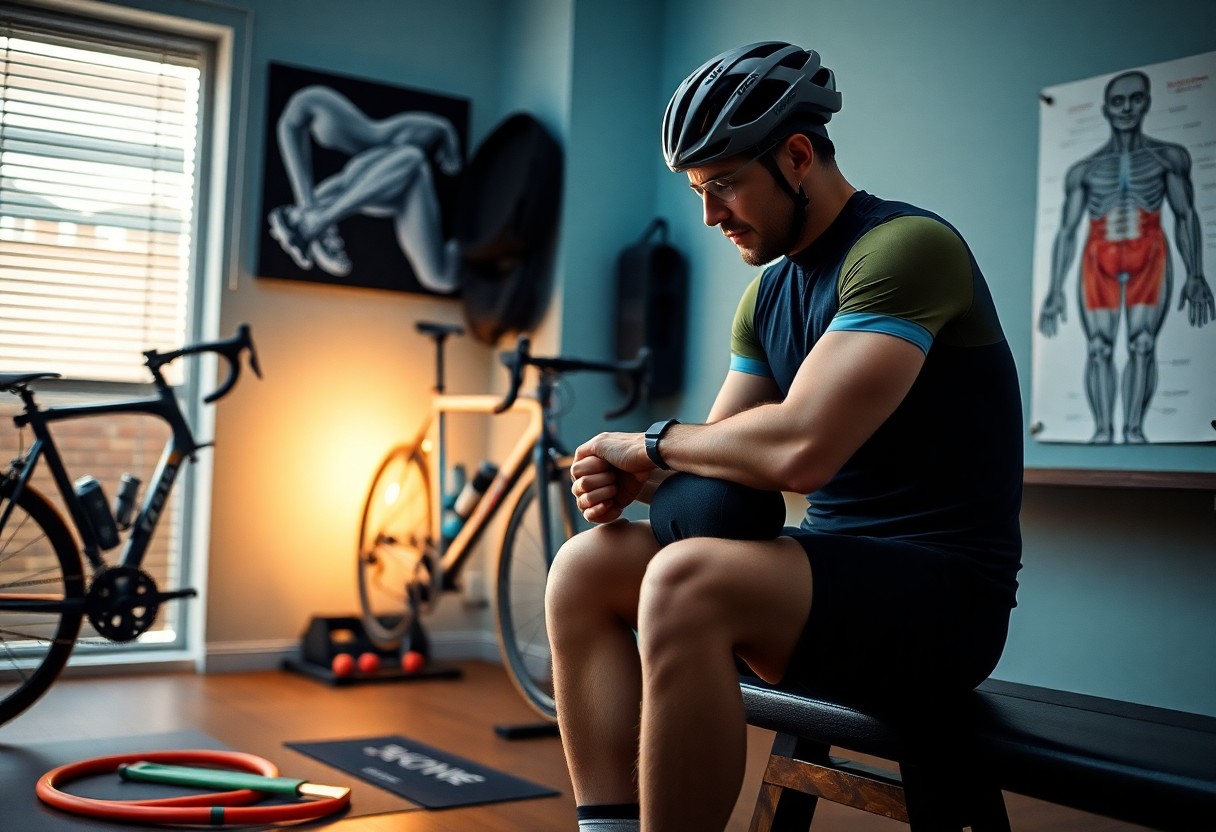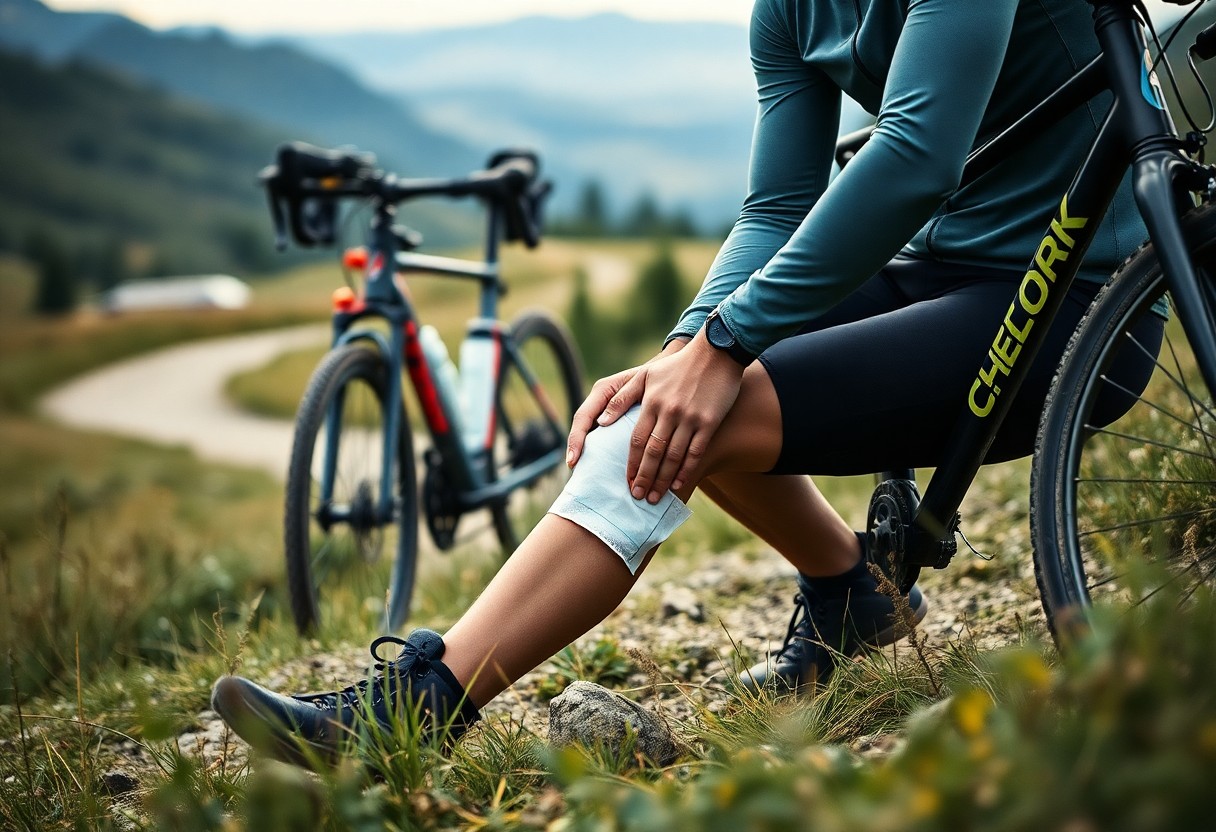Riding for extended periods can often lead to unwanted knee pain, which can diminish your enjoyment and performance. To maintain a positive experience, it’s vital to take necessary precautions. In this post, you will learn effective strategies to prevent discomfort, manage pain, and ensure you can complete your long rides with confidence. By adjusting your gear, monitoring your form, and incorporating specific exercises, you can keep your knees healthy and your rides pleasurable.
The Anatomy of Knee Pain
Knee pain during cycling often stems from the complex anatomy of the knee joint itself. Comprised of bones, cartilage, ligaments, and tendons, the knee functions as a hinge joint that facilitates movement. When any component of this intricate structure becomes overstressed or injured, discomfort can arise. Conditions such as bursitis, tendinitis, and ligament injuries can plague cyclists and affect performance. Understanding how your anatomy works together can aid in recognising and addressing pain points effectively.
Common Causes of Knee Discomfort during Cycling
A variety of factors lead to knee discomfort while cycling. The most common culprits include improper bike fit, overuse injuries, and poor pedal technique. For instance, if your saddle is too high or low, it can cause excess strain on the knees, leading to discomfort and potential injury. Additionally, repetitive strain from high mileage without adequate rest may exacerbate underlying conditions such as patellar tendinitis or iliotibial band syndrome.
How Riding Style Influences Joint Health
Your riding style significantly affects knee health. The way you position your body and pedal can impact the forces transmitted through your knees during cycling. An inefficient pedal stroke or improper body alignment may lead to uneven pressure, resulting in pain over time. For example, a common problem during long rides is the extended use of the quadriceps without engaging the hamstrings, which can lead to muscle imbalances and discomfort. Additionally, incorporating proper warm-up and cool-down routines can help mitigate strains and optimise your overall cycling experience.

Pre-Ride Preparation: Setting Yourself Up for Success
Proper preparation can make all the difference in your leg endurance and knee health during long rides. By understanding your bike fit and incorporating a tailored warm-up routine, you can significantly reduce the risk of knee pain and enhance your overall riding experience.
The Importance of a Proper Bike Fit
A proper bike fit is fundamental for optimising your riding posture and preventing knee strain. A misaligned saddle or incorrect handlebar height can lead to discomfort and pain during and after rides. Ensuring your saddle height allows for a slight bend in your knee at the bottom of the pedal stroke, and maintaining a horizontal alignment of the knee over the pedal axle can help in avoiding unnecessary stress on your joints.
Essential Warm-Up Exercises to Prevent Injury
Incorporating targeted warm-up exercises before hitting the road can prepare your muscles and joints for the demands of cycling. Dynamic stretches, such as leg swings and lunges, along with specific movements that engage your quadriceps, hamstrings, and calves, help increase blood flow and flexibility, reducing the likelihood of injury.
Consider starting with movements like leg swings to loosen up your hips and improve your range of motion, followed by walking lunges to activate your quads and glutes. Adding a few gentle heel raises prepares your calves for the pedalling motion. Spending just 10-15 minutes on these simple exercises can enhance your performance and keep your knees happier during long rides.
Pain Management Techniques on the Road
Managing knee pain while cycling requires a blend of immediate relief techniques and preventive measures to ensure you can continue enjoying your rides. Active solutions help mitigate discomfort while maintaining performance. Whether you find yourself in the midst of a hunger-inducing saddle sore or simply dealing with a twinge of irritation, having effective strategies at your disposal can help you push through those challenging moments.
Quick Relief Strategies for On-the-Go Pain
For immediate relief during rides, consider using over-the-counter pain relief gels that can be applied directly to the knee area. Carrying a small cold pack or even a damp towel can also provide soothing effects during rest stops. If discomfort strikes, altering your position in the saddle or adjusting the pedal stroke can relieve pressure, allowing you to readjust and keep pedalling pain-free.
Long-Term Strategies to Minimise Recurrence
To minimise the chances of knee pain recurring during long rides, integrate strength training and flexibility exercises into your routine. Focusing on hamstring, quadriceps, and calf muscles can help protect the knee joint by better supporting its mechanics. Incorporating a proper warm-up before rides and cool down afterwards will also help maintain flexibility while reducing the likelihood of injuries. Regular assessments of your bike fitting ensure that your posture remains optimal, further decreasing strain on your knees.
Engaging in strength training not only enhances your overall cycling performance but also fortifies the muscles that support the knee joint, creating a more stable environment for it to function. Research indicates that cyclists who implement strength exercises at least twice a week can experience a significant reduction in knee-related issues. Additionally, maintaining body weight within a healthy range can alleviate unnecessary pressure on your knees, allowing you to enjoy long rides without the fear of pain interrupting your adventure.
Nutrition and Hydration: Fueling Joint Health
Optimising your nutrition and hydration can enhance your joint health and overall cycling performance. Focusing on anti-inflammatory foods and adequate water intake lays a strong foundation for minimising knee pain. Incorporate nutrients that aid in recovery and joint support to keep your knees functioning effectively during those long rides.
Foods that Support Joint Functionality
Your diet can significantly impact joint health. Incorporate omega-3 fatty acids found in fish like salmon, as well as antioxidant-rich fruits such as berries and pomegranates. Leafy greens, nuts, and seeds also play a vital role by providing important vitamins and minerals that support joint flexibility and reduce inflammation, making them ideal additions to your meals.
Hydration and its Role in Pain Perception
Staying adequately hydrated is important for managing pain perception. Research indicates that even slight dehydration can exacerbate discomfort and hinder performance. Ensuring consistent fluid intake can help mitigate joint stiffness and support the overall function of your knee during rides.
Studies suggest that dehydration can lead to increased pain sensitivity, potentially intensifying your knee discomfort. When you cycle, your body loses fluids through sweat, which can lead to an imbalance that heightens inflammation and diminishes your body’s ability to repair tissues. By maintaining sufficient hydration, you enhance circulation and nutrient delivery, promoting optimal function and comfort in your joints, crucial for those lengthy adventures on your bike.
Adapting Post-Ride Recovery Practices
Incorporating effective post-ride recovery practices can significantly impact your knee health and overall performance. After long rides, your muscles and joints need time to recover and repair. Implementing a combination of targeted stretching, appropriate rest, and gentle activities can help maintain flexibility and alleviate any discomfort that may arise from prolonged cycling. Your post-ride routine should be as deliberate as your preparations before heading out on the bike.
Stretching Routines for Enhanced Flexibility
Integrating a solid stretching routine into your post-ride recovery can enhance your flexibility and, in turn, reduce the risk of knee pain. Focus on stretches targeting the quadriceps, hamstrings, and calves to loosen tight muscles and improve circulation around the knee joint. For example, holding a standing quadriceps stretch for 30 seconds on each leg can effectively ease tension. Engaging in these stretches not only aids recovery but also promotes better mobility for future rides.
The Role of Rest in Preventing Future Discomfort
Giving your body adequate rest between rides allows for muscle repair and reduces the likelihood of overuse injuries. Scheduling rest days helps to prevent discomfort, especially after challenging rides. Integrating two rest days into your weekly routine can lead to improved endurance and overall performance, protecting your knees in the long run.
Rest doesn’t merely mean sitting idle; active recovery, such as light walking or swimming, promotes blood flow to sore areas without straining your knees. Additionally, ensuring that you’re getting sufficient sleep each night is equally crucial, as this is the time your body regenerates and heals. Consider tracking your perceived exertion levels to fine-tune your rest periods and ensure you’re allowing enough time for recovery, which is key to maintaining a long and enjoyable cycling journey.
Conclusion
Following this guide, you will be better equipped to manage knee pain on long rides. Implementing proper warm-up routines, maintaining correct bike fit, and practising good riding techniques can significantly reduce discomfort. Additionally, integrating strength training and flexibility exercises into your routine will enhance knee stability and resilience. Always listen to your body, and don’t hesitate to seek professional advice if your pain persists. By adopting these strategies, you can enjoy your rides while keeping knee pain at bay.
